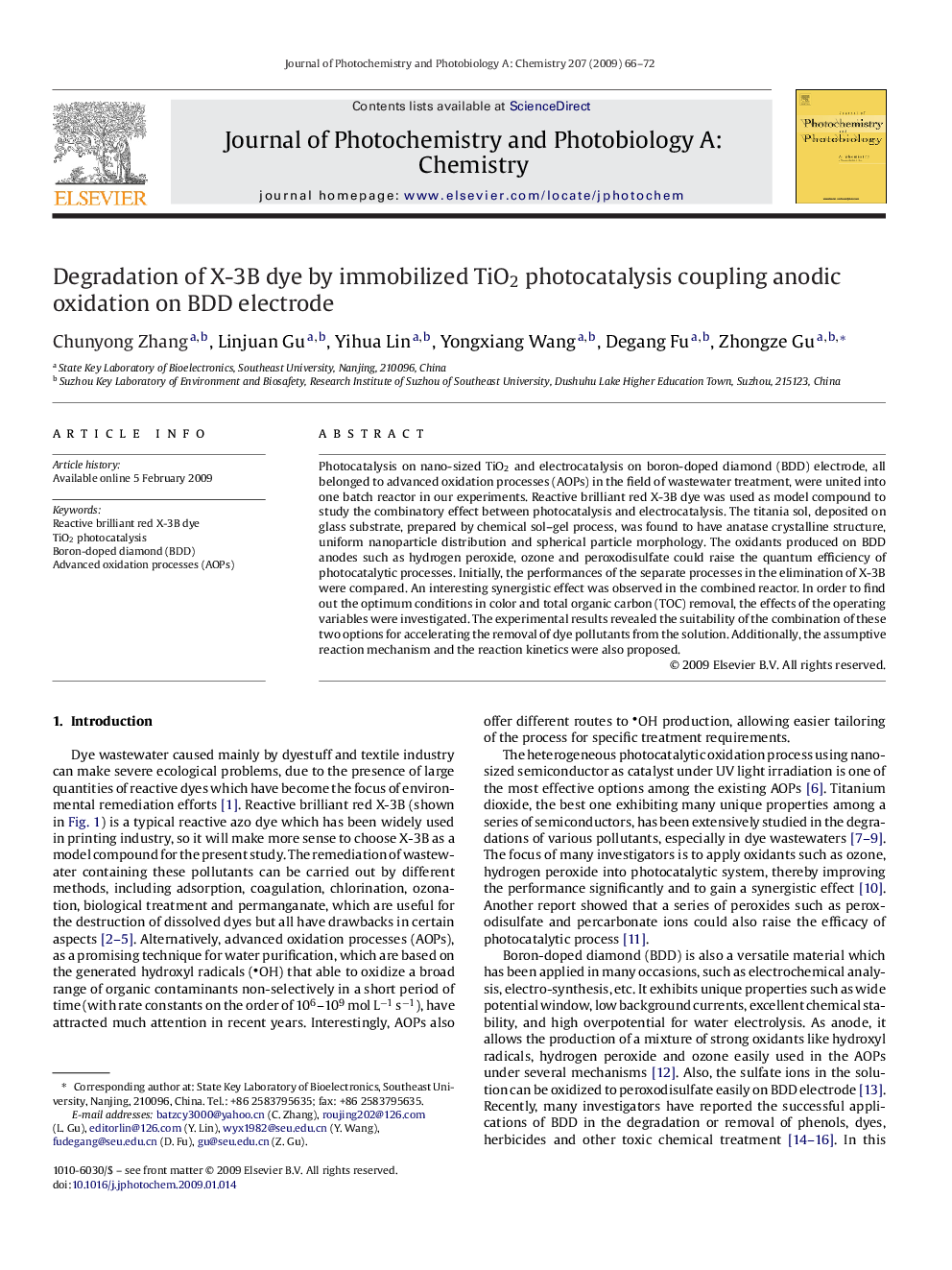| Article ID | Journal | Published Year | Pages | File Type |
|---|---|---|---|---|
| 27306 | Journal of Photochemistry and Photobiology A: Chemistry | 2009 | 7 Pages |
Photocatalysis on nano-sized TiO2 and electrocatalysis on boron-doped diamond (BDD) electrode, all belonged to advanced oxidation processes (AOPs) in the field of wastewater treatment, were united into one batch reactor in our experiments. Reactive brilliant red X-3B dye was used as model compound to study the combinatory effect between photocatalysis and electrocatalysis. The titania sol, deposited on glass substrate, prepared by chemical sol–gel process, was found to have anatase crystalline structure, uniform nanoparticle distribution and spherical particle morphology. The oxidants produced on BDD anodes such as hydrogen peroxide, ozone and peroxodisulfate could raise the quantum efficiency of photocatalytic processes. Initially, the performances of the separate processes in the elimination of X-3B were compared. An interesting synergistic effect was observed in the combined reactor. In order to find out the optimum conditions in color and total organic carbon (TOC) removal, the effects of the operating variables were investigated. The experimental results revealed the suitability of the combination of these two options for accelerating the removal of dye pollutants from the solution. Additionally, the assumptive reaction mechanism and the reaction kinetics were also proposed.
